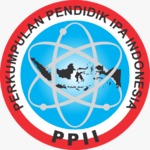Studi Pemetaan Kerawanan Gempabumi Berdasarkan Pola-Pola Sesar Menggunakan Focal Mechanism dari Data Gempabumi di Wilayah Bali
DOI:
https://doi.org/10.29408/kpj.v9i1.29374Keywords:
Bali Region; earthquake; fault, focal mechanism methodAbstract
Research regarding earthquake vulnerability mapping studies based on fault patterns using focal mechanism data from earthquake data in the Bali Region has been carried out. This research aims to determine fault patterns in the Bali region using a focal mechanism from earthquake data for 1976-2021, determine the types of faults in the Bali region when analyzed using the focal mechanism method and determine areas that are prone to earthquakes in the Bali region. The data used are seismograph recordings obtained from the Global Centroid Moment Tensor (CMT) and the United States Geological Survey (USGS). The method used in this research is the focal mechanism method. The results of mapping the distribution of focal balls in the Bali region are that there were 9 earthquake events above 4 M, with 8 events being thrust faults and 1 being an oblique fault. Areas that are prone to earthquakes are in the East Bali region, specifically in Karangasam, and in general earthquakes occur in water areas or at sea. The results of the seismicity map of the distribution of earthquakes show that the depth of earthquakes in the Bali region varies. On the seismicity map, it can be seen that the most dominant ones are earthquakes in the deep and medium earthquake categories, but the most dangerous are earthquakes in the shallow depth category.
References
Ardiansyah, T. 2012. Analisa Statistik Tingkat Keaktifan Gempa Bumi di Daerah Bali dan Nusa Tenggara. Akademi Meteorologi dan Geofisika Jakarta.
Bormann, P. 2002. New Manual of Seismology Observaty Practice. Postdam: Geo Forschung Zentrum Postdam.
Darsono. 2016. Analisa Tingkat Risiko Bencana Gempabumi di Wilayah Bali. Buletin Fisika Vol 17 No. 1 Pebruari 2016 : 57 – 62.
Dena, K. 2012. Kondisi Geologi dan Topografi Pulau Bali. Singaraja: Geografi USB
Munir, B. 2015. Penggunaan Data Gempa dan Data Geologi untuk Menganalisa Pola-pola Sesar di Pulau Sumatera. Skripsi Jurusan Fisika Universitas Islam Negeri Maulana Malik Ibrahim Malang.
Naim, M. I. 2018. Analisis Seismisitas dari Kepulauan Mentawai pada periode 2010 – 2016.Indonesian Journal of Applied Physics,8(1),6.
Nugraha, A. D., H. A. Shiddiqi, S. Widiyantoro, Sutiyono, & T. Handayani. 2016. Analysis of Spatiotemporal Variation in B-value for the Sunda Arc using High Precision Earthquake Location. AIP Conference Proceedings, 1730
Pratama, I.P. Dedy, 2021. Identifikasi zona sesar di Bali menggunakan data gravitasi GGMplus dan data Alos-2 PASLAR-2. https:jurnal.unimed.ac.id/2012/index .php/geo e -issn (2549-757) dan p-issn (2085-8167).
Sabar, A. 2014. Energi Potensial Gempabumi di Kawasan Segmen Mentawai-Sumatera Barat, jurnal Meteorologid an Geofisika, vol. 2 No: 1 pp. 1-9.
Subardjo, I.G. 2004. Pengetahuan Seismologi. Jakarta: Badan Meteorologi, Klimatologi dan Geofisika.
Sunarjo, M.,T., Gunawan dan S. Pribadi. 2012. Gempabumi Edisi Populer. Jakarta: Badan Meteorologi, Klimatologi dan Geofisika.
Waluyo. 2013. Diktat Kuliah Seismologi. Yogyakarta: Universitas Yogyakarta.
Wardani, N.,N.,S.,K., Suarbawa, K.,N., Kusnandar, R. 2021. Penentuan Jenis Sesar pada Gempabumi Lombok Tanggal 1 Juli sampai 31 Desember 2018 Menggunakan Metode Mekanisme Fokus. Buletin Fisika Vol 22 No. 2 Agustus 2021 : 91 – 96.
Downloads
Published
Issue
Section
License
Copyright (c) 2025 Kappa Journal

This work is licensed under a Creative Commons Attribution-ShareAlike 4.0 International License.
Semua tulisan pada jurnal ini menjadi tanggungjawab penuh penulis. Jurnal Kappa memberikan akses terbuka terhadap siapapun agar informasi dan temuan pada artikel tersebut bermanfaat bagi semua orang. Jurnal Kappa dapat diakses dan diunduh secara gratis, tanpa dipungut biaya, sesuai dengan lisensi creative commons yang digunakan








